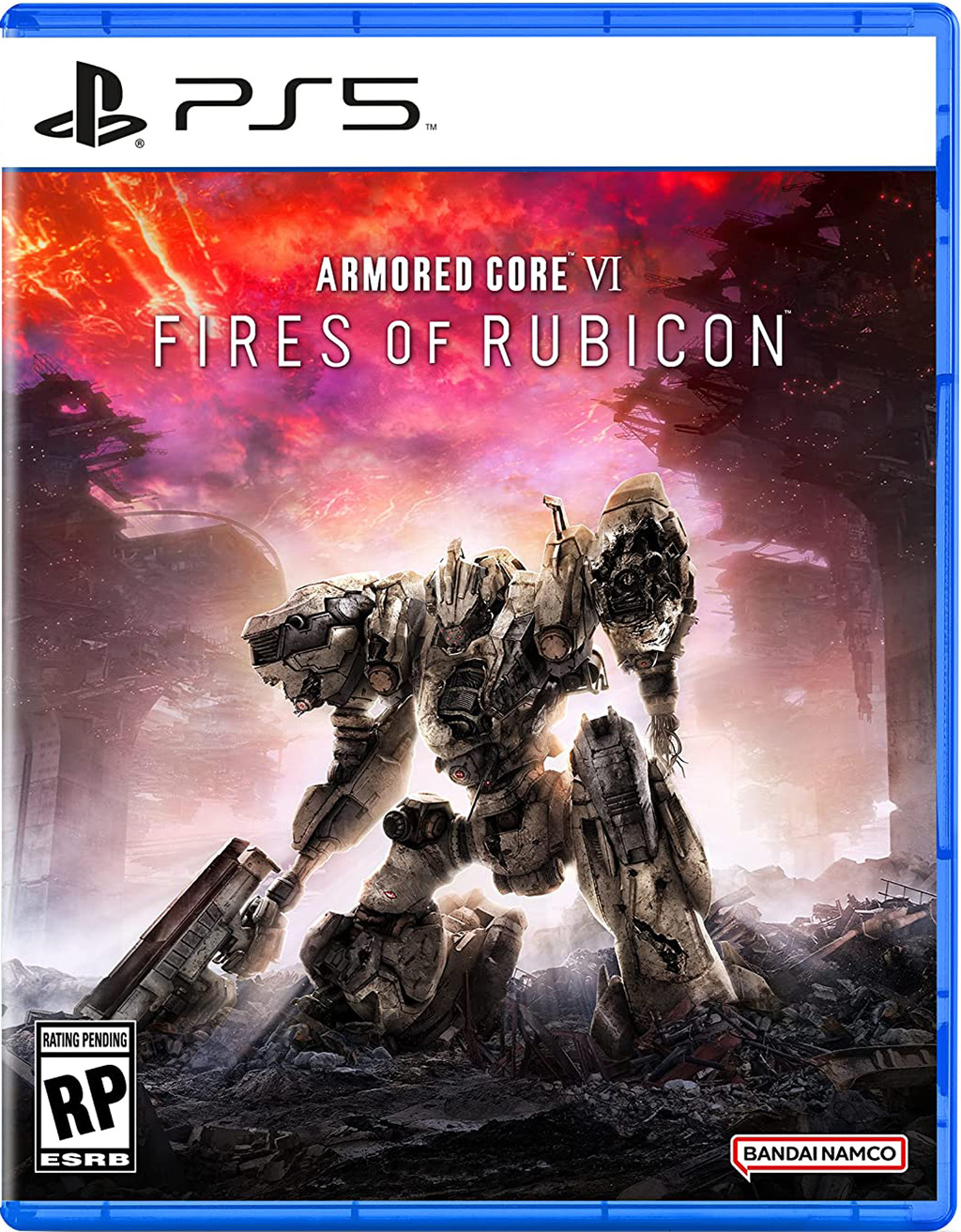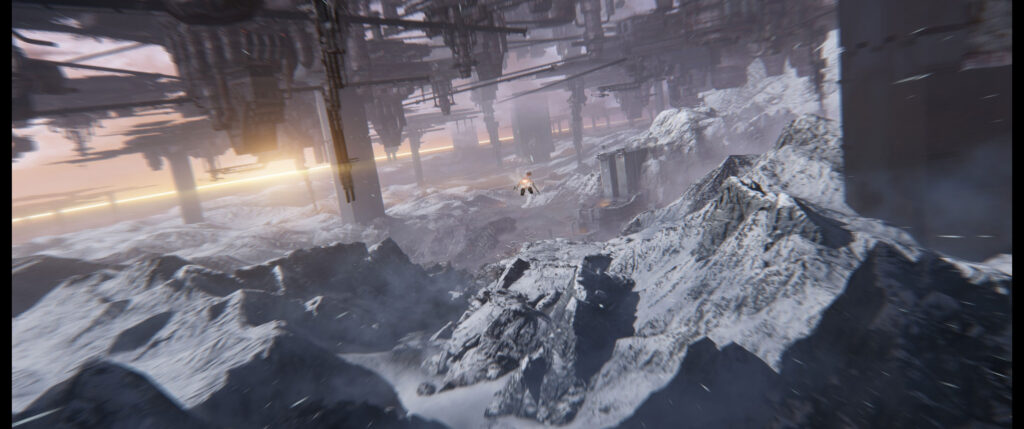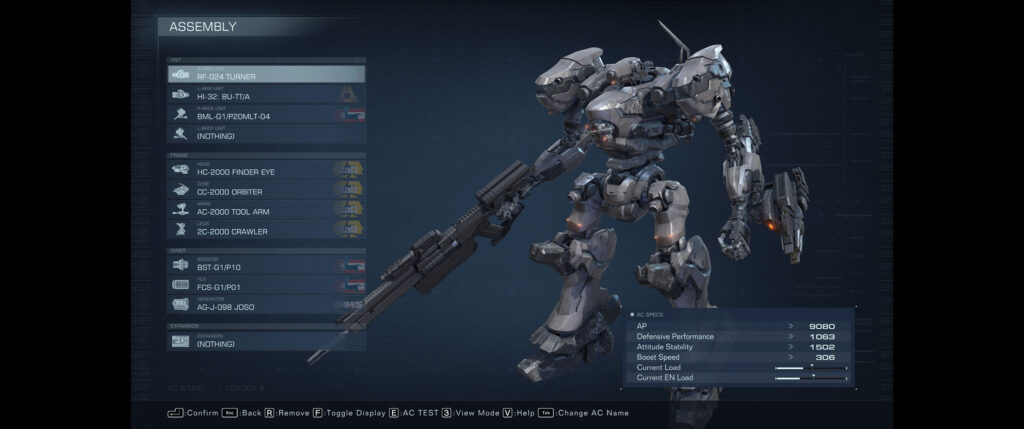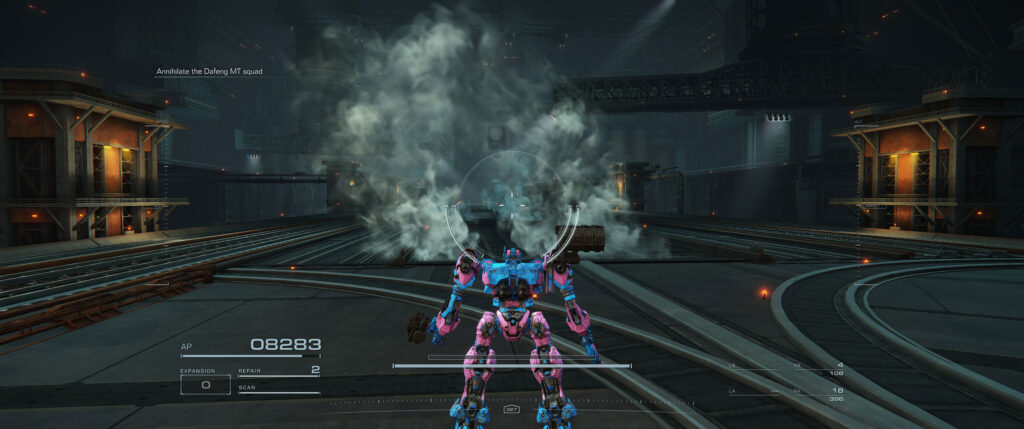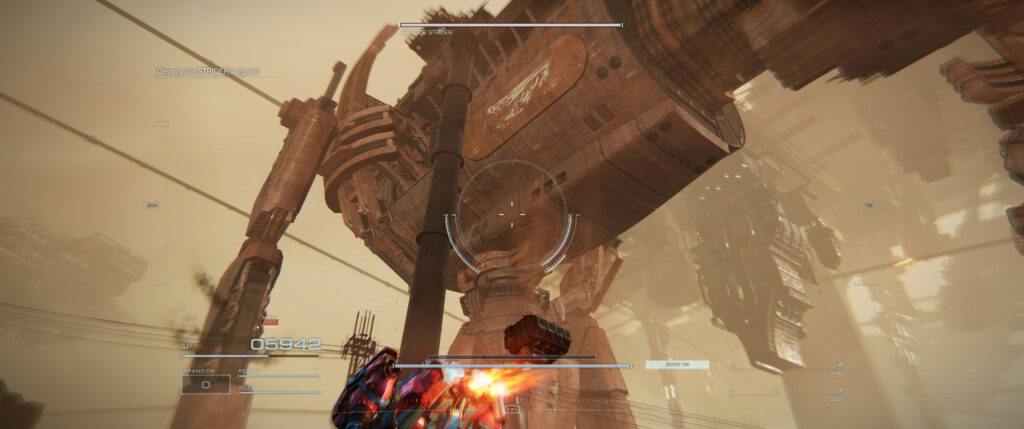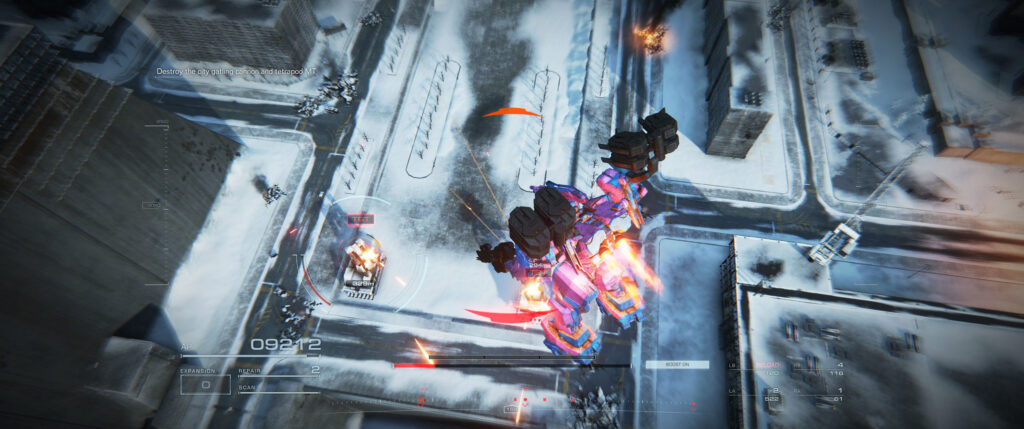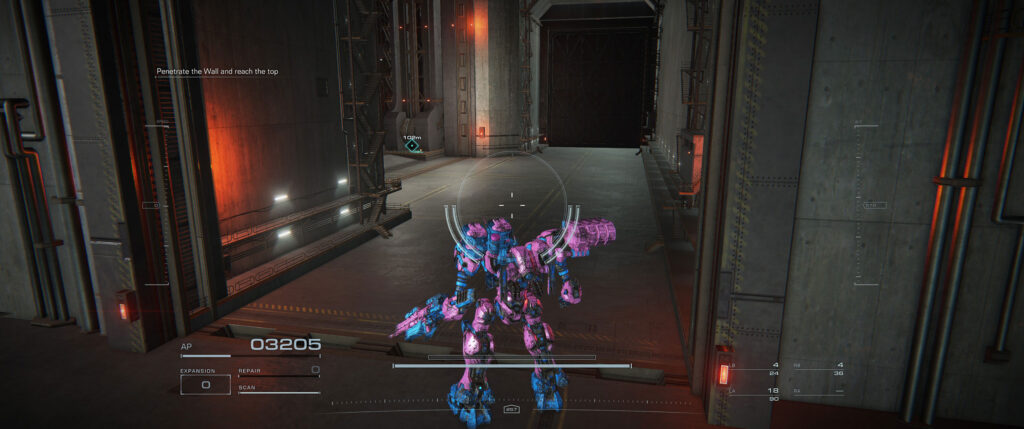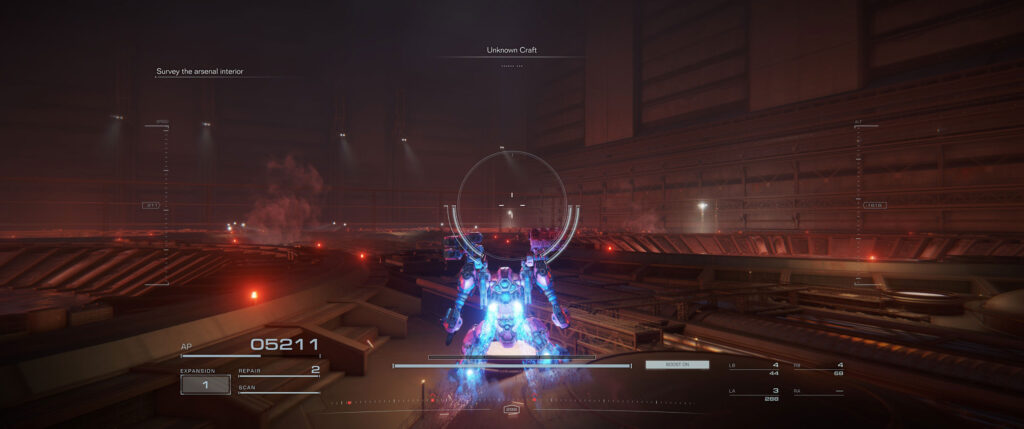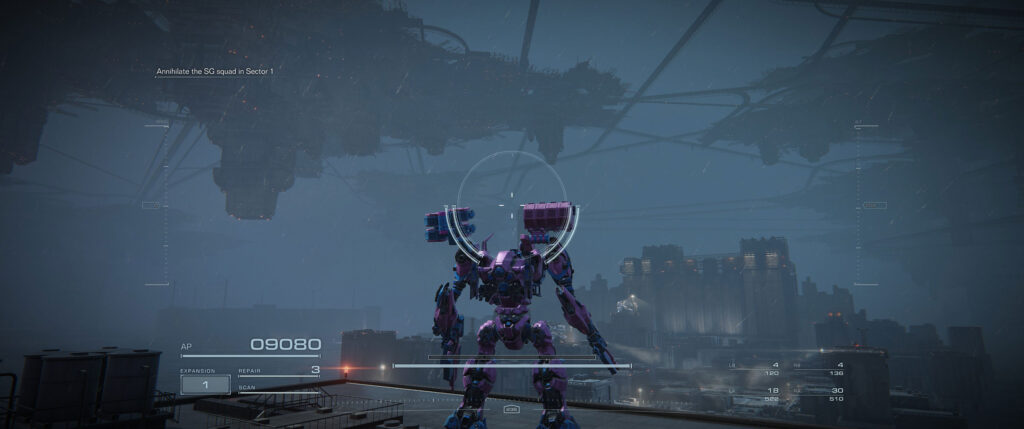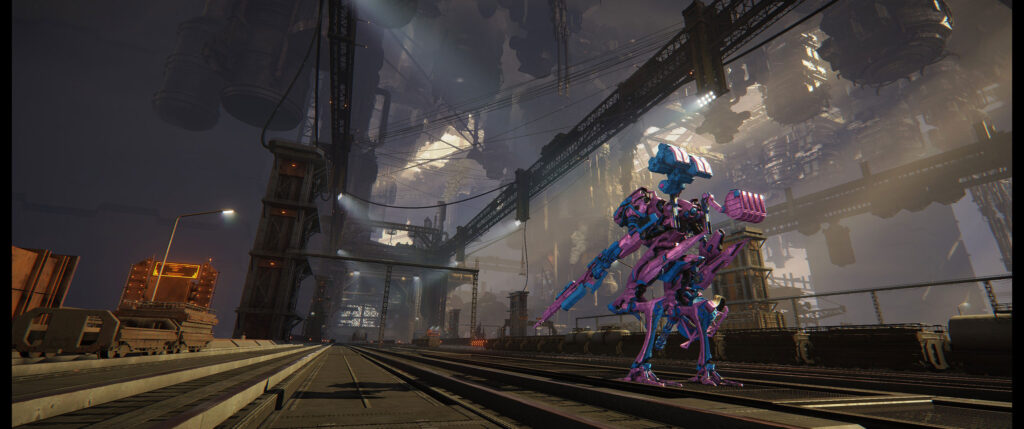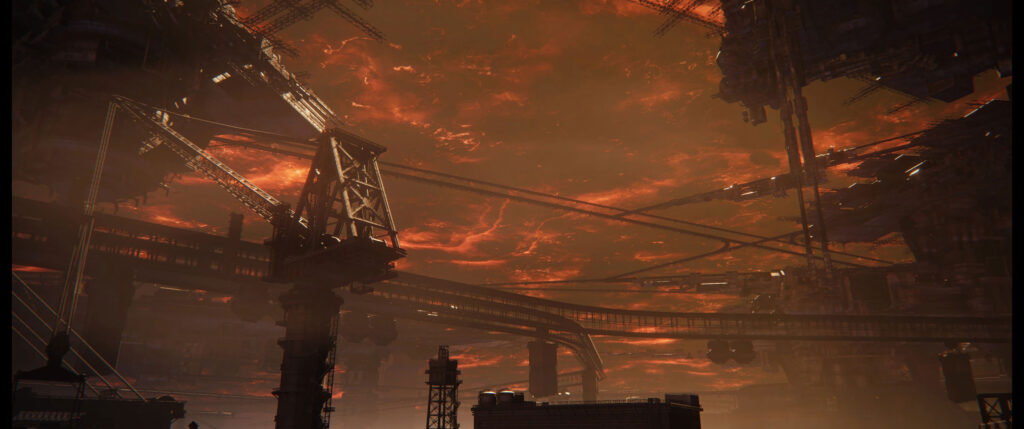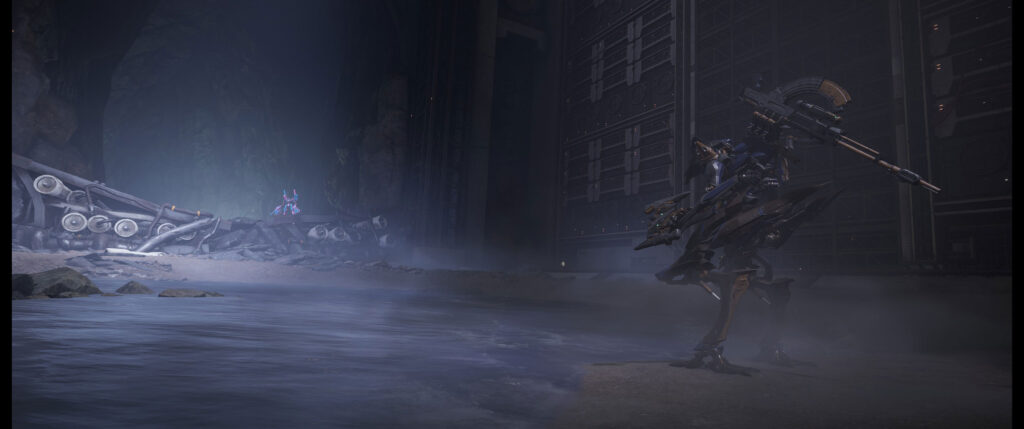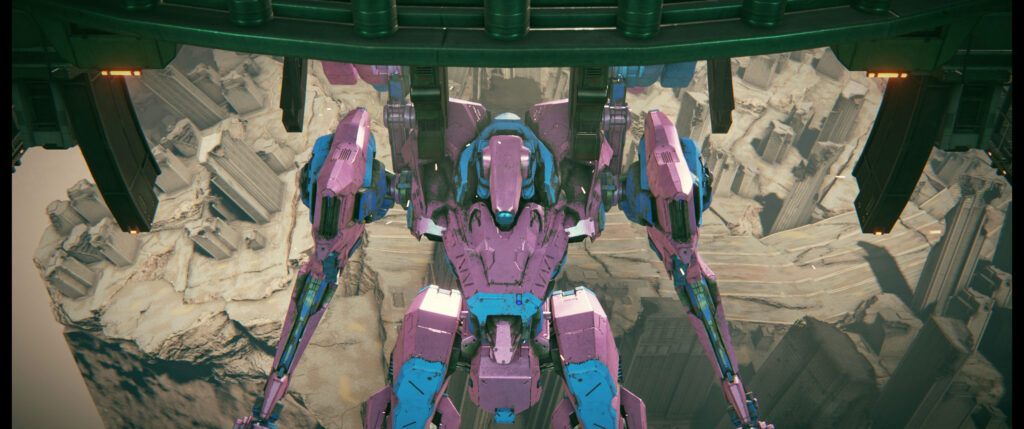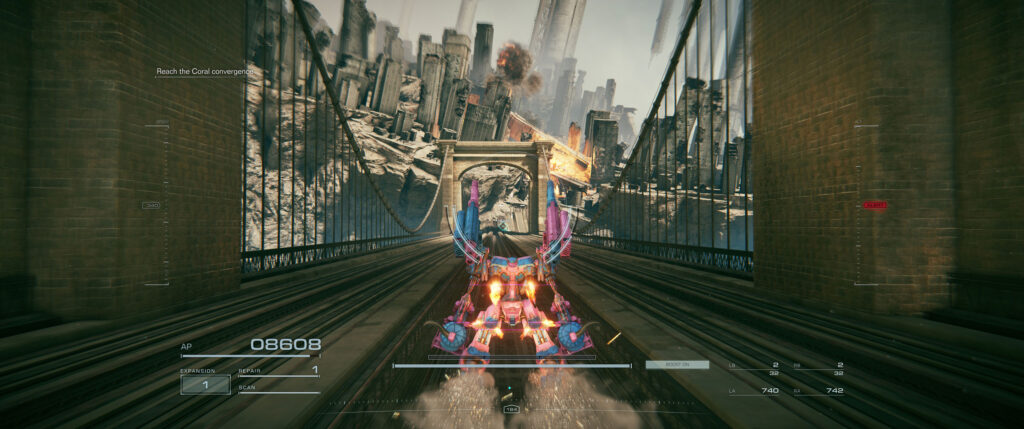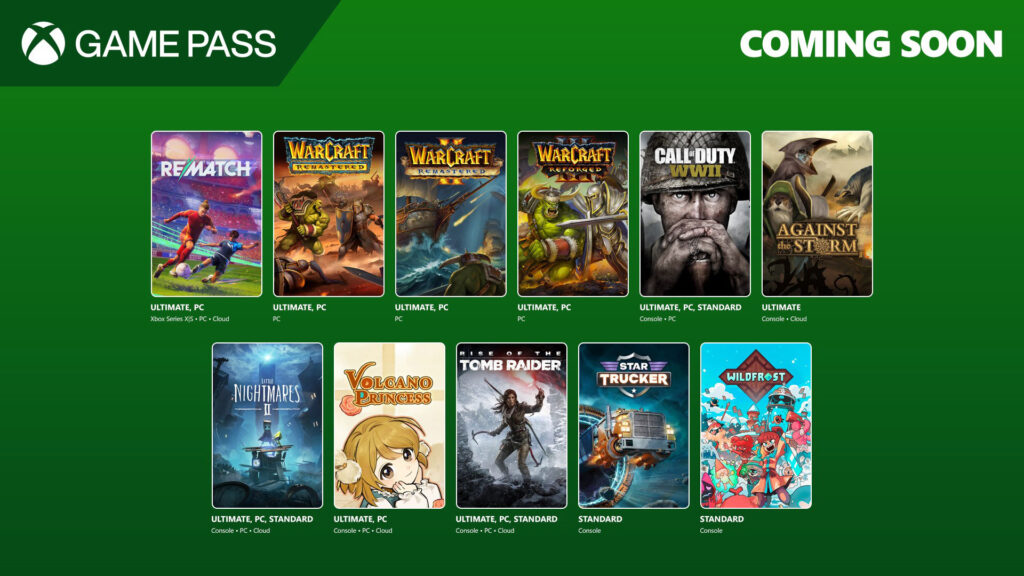Quick Verdict
Armored Core VI: Fires of Rubicon is a very interesting game, because I would completely understand if someone said it’s the best game they’ve ever played, and if someone else said they absolutely hated it. In a way, that’s how you know it’s a modern FromSoftware game. However, I’d argue Armored Core VI’s combat makes it both more enjoyable and more frustrating to play when compared to other FromSoftware titles, such as Elden Ring, Bloodborne, and the Souls series.
I initially thought Armored Core VI would be the perfect FromSoftware game for me. My biggest complaint with other titles from the developer is the slower, more methodical combat. Armored Core VI’s combat is absolutely fantastic. It’s one of the most enjoyable systems I’ve ever experienced in gaming. Unfortunately, I still have my personal issues with FromSoftware’s design philosophy when it comes to boss fights, and this issue shines through even more with Armored Core VI.
Your enjoyment of this game will largely depend on your feelings about other FromSoftware titles. If you’re relatively inexperienced with FromSoftware titles, like I am, then this review may resonate with you.
New Cores, Old Themes
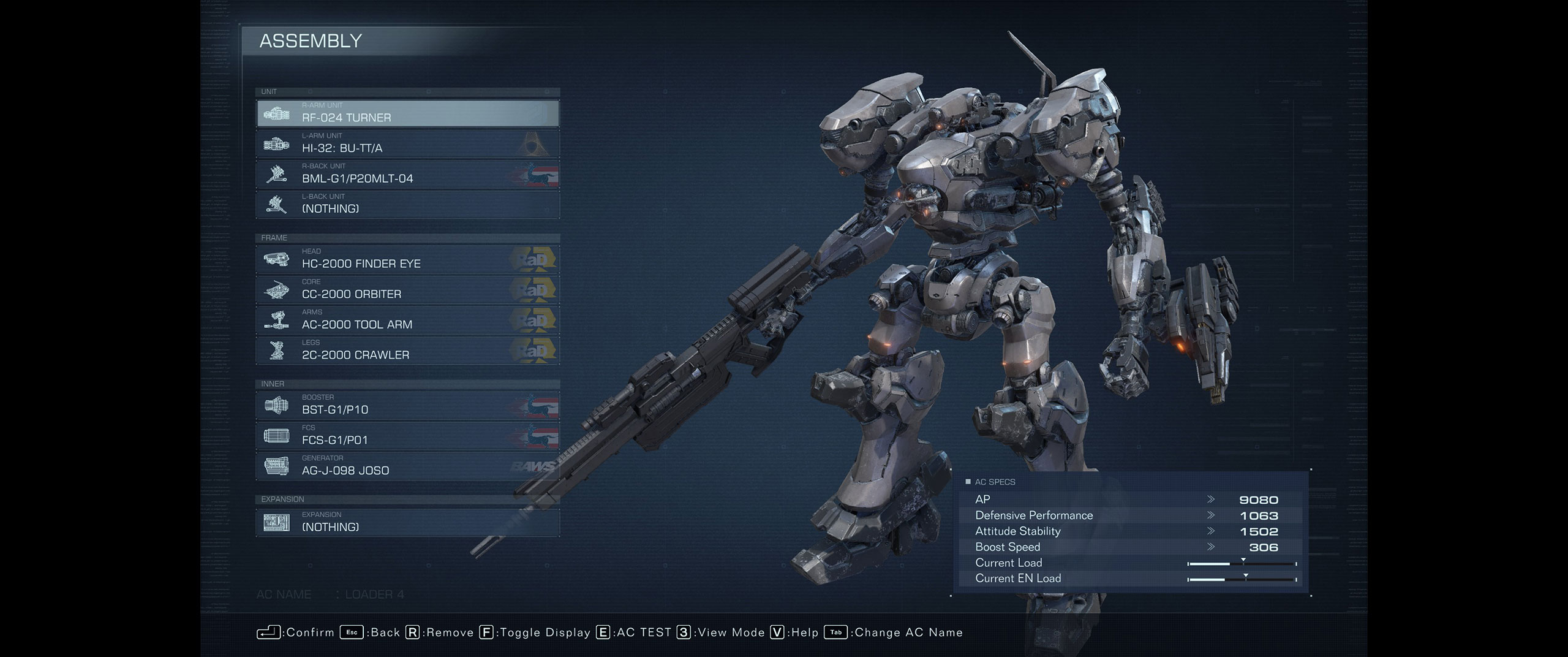
For those unfamiliar with the Armored Core franchise, and understandably so, it all started in 1997 with the first Armored Core title on the original PlayStation. Developed by FromSoftware, it would go on to spawn an entire series of mecha combat games with Armored Core V releasing in 2012. That came a year after Dark Souls’ release, and three years after Demon’s Souls’ arrival, but even so, FromSoftware was still largely considered a niche developer back then.
It wasn’t until Bloodborne and Sekiro: Shadows Die Twice won Game of the Year awards that interest in FromSoftware’s offerings really surged. Finally, the release of last year’s Elden Ring brought the “soulslike” genre to millions of new players, which has subsequently brought a lot of attention to Armored Core VI’s release. FromSoftware is now a brand that many gamers will blindly purchase a game from. The developer has established itself as one of the best in the industry, especially if you love challenging games.
In the gaming world, if Final Fantasy is like a best friend to me, FromSoftware games are more like acquaintances. I played a bit of Demon’s Souls when it first released in 2009, attempted about two hours in Bloodborne, and have spent about 50 hours exploring Elden Ring, but have never finished it. Much to my surprise, I can now say I’ve completed a FromSoftware game, thanks to Armored Core VI. If you’re looking for a review from the perspective of someone who hasn’t spent a lot of time exploring FromSoftware’s worlds and has very little experience with previous Armored Core titles, you’ve come to the right place.
Chronicles of Conflict
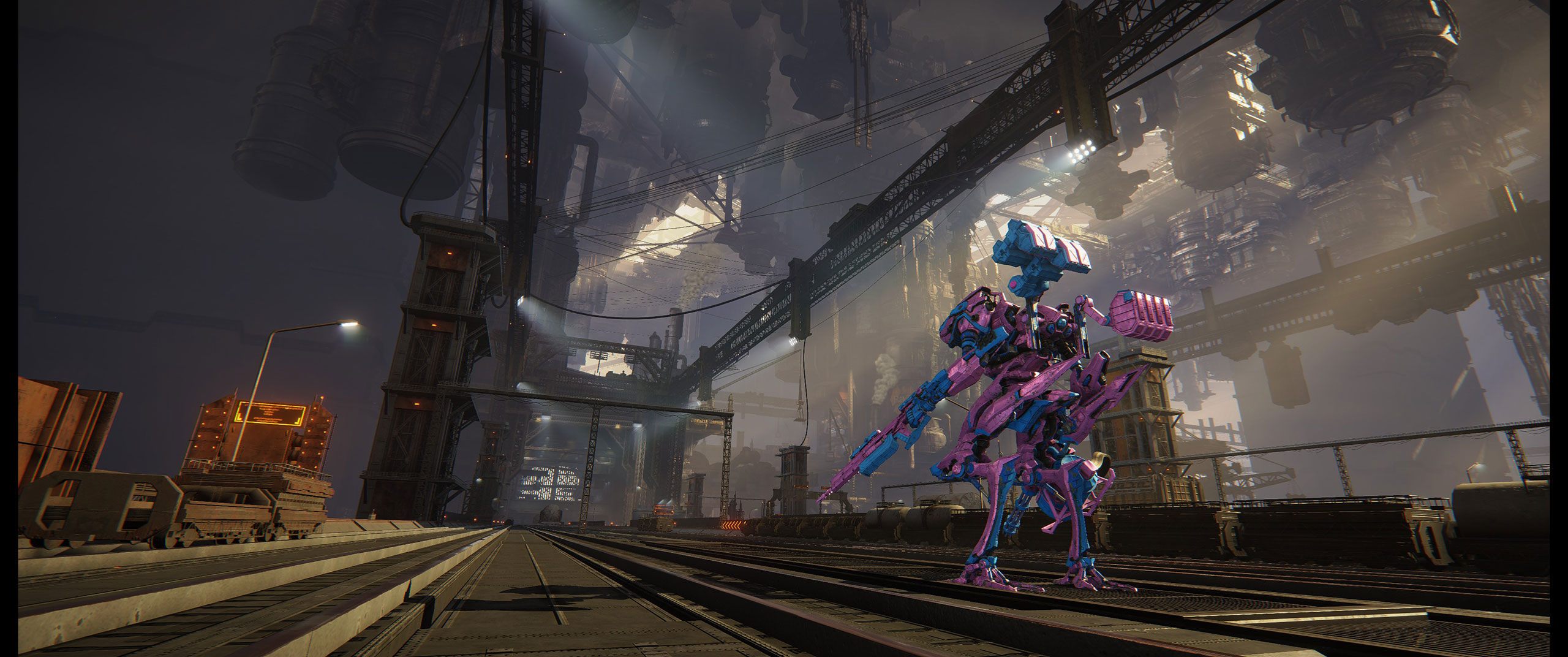
If you’re looking for a compelling story with memorable characters, that’s not the experience you’re going to get with Armored Core VI. Although its narrative is better than the worst games in that aspect, it still delivers a below-average storytelling experience. Much of the storytelling is done through dialogue alone, and, thankfully, the voice acting is superb. However, I will say that this dialogue-heavy method of story delivery, similar to previous games in the franchise, complements the game’s mercenary theme well. You don’t have any real allegiance in the game, which mimics what life would be like as a mercenary piloting a mech.
There are branching paths and decisions to make as you go through the game’s five chapters. At specific junctures in the game, you have to choose between two missions, each affecting the overall story arc. Yes, that means Armored Core VI has multiple endings. Armored Core VI, like NieR: Automata, is designed for multiple playthroughs. While there is additional content to support these extra runs, it’s not as robust as what you’d find in NieR: Automata.
What’s there is compelling enough to hold your interest. A fitting comparison would be the movie Pacific Rim. The 2013 film had a passable plot with generic characters, but you didn’t go to watch that movie for that. You watched Pacific Rim to see giant robots fight giant kaijus, and the film excelled at delivering that fantasy. Armored Core VI successfully hits the same notes and will likely be the best game to do so for many years to come. Probably until Armored Core VII is released.
Dressing for War
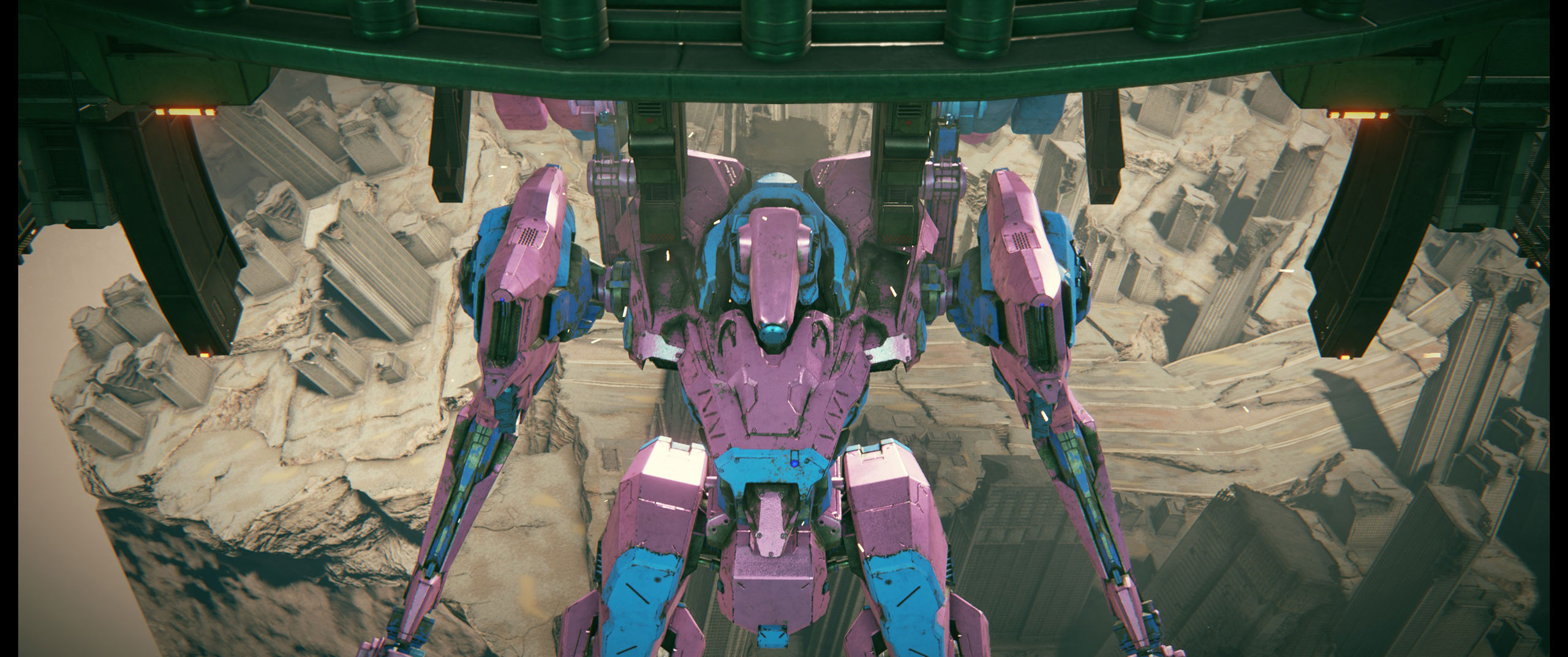
An Armored Core game wouldn’t be successful without fulfilling the player’s fantasy of customizing and building their own mech. Part of the appeal of the game lies in spending hours in the garage, and Armored Core VI offers all the tools you need to truly make your mech unique. It allows you to create your own custom logos to apply onto your mech as stickers, and customize the paint color of every single part. Each part of your frame can be colored with six individual shades. Once selected, these color choices will persist, even if you swap out the parts later. Finally, you can easily share your entire mech with the world by uploading your creation. It’s really unfortunate the gaming industry is in a state where I have to even mention this, but all this level of customization isn’t gated behind a paywall.
When it comes to assembling your mech, you have four slots for weaponry: R-Arm Unit, L-Arm Unit, R-Back Unit, and L-Back Unit. Arm and back weapons are different; think of your arm weapons as your guns or melee options, while your back (or shoulder) weapons are slots for shields, missiles, or cannons. As you progress through the game, you’ll unlock more and more choices, and the combinations are astounding with the amount of weapons you can choose from. Pair that with the fact that, later on, you unlock the ability to equip four arm weapons that you can swap between (instead of having two arm weapons and two back weapons), allowing you to build your mech to suit virtually any playstyle.
For the frame, it’s broken down into the head, core, arms, and legs with each component affecting different stats such as AP (essentially your health), stability, recovery, load limit, firearm specialization, weight, and EN (energy) load. The combination of frame parts you choose significantly influences the weapons you can or cannot take into a mission. In other words, you can’t build this super lightweight, nimble mech that has two giant gatling guns and massive 10-bay missile launchers on each of your shoulders.
The system is very well balanced, and the multiple choices for legs result in very different forms of mechs. For example, you can go bipedal with two legs, which leaves you very light, quick, and nimble, or tetrapod with four legs, allowing you to hover in the air for an extended period of time. There’s also the tank option, which transforms you into a heavyweight artillery machine that can carry the biggest and baddest weapons while sacrificing some mobility.
There are three slots for inner parts, which is where you select the booster that affects your thrust levels; the Fire Control System (FCS) that affects your aiming assistance and the time it takes to lock-on with missiles and other homing weapons; and the generator, which affects all matters related to your EN. Lastly, through OS Tuning, you get to choose an expansion slot. These expansion slots are essentially choices of armor that provide either active or passive defensive abilities. OS Tuning also offers several more unlocks that are basically abilities for your mech.
This might seem complex or overwhelming, but the system is designed to be intuitive, so you should catch on quickly on how to make the most of it.
Fair Fight or Foul

I played Armored Core VI on PC and at first, the keyboard and mouse controls felt a bit unfamiliar to me. So I plugged in my Xbox Elite Controller and after one attempt at the first mission with the controller, I unplugged it and went right back to keyboard and mouse. Either control scheme takes a little bit of getting used to, but I opted to familiarize myself with keyboard and mouse because of how much quicker it is to turn your camera when compared to using a controller. The game does unlock an ability to quickly do a turn later on, which seems to be designed for console or controller players. Personally, I was thankful for my MMO gaming mouse, as it allowed me to bind Q, E, and Shift to buttons on the mouse. This meant I could focus on movement with the keyboard, and everything else with the mouse.
The majority of the missions in Armored Core VI aren’t very difficult. In fact, they play very much like an arcade experience, with a run-and-gun style that is an addictive and enjoyable experience. The controls are very responsive and everything feels quick and snappy, while modifying your mech with certain parts will alter the way it feels. As a result, you’ll likely build a mech in the early stages of chapter 1 that fits your playstyle, whether that’s quick and nimble, or slow and tanky. You’ll also learn which weapons you prefer to use, and how they complement your mech’s frame. Shooting a shoulder cannon with a lightweight frame feels sluggish and leaves you vulnerable, but you won’t even notice any recoil when doing the same with a tank frame.
Throughout the five-chapter journey, you’ll encounter a decent variety of mission objectives. Some stages will have you playing protect the point, while others feature stealthed enemies. There’s also the arena option, which is a one-on-one fight with another AC. These battles tend to be fairly short, especially since you can’t use a repair kit, which serves as a good introduction to PvP. Speaking of PvP, the mode doesn’t unlock until you clear chapter 2.
All that being said, this is where my review is likely going to be controversial. As I mentioned before, I don’t have a lot of experience playing FromSoftware games, and that’s largely because I’m not a fan of its slower pace of combat. I don’t mind difficult games and often welcome challenges, but I have always had an issue with FromSoftware’s design philosophy. This point is going to come down to personal preference, but I think it’s a very good way to determine whether or not you’ll enjoy playing Armored Core VI. I thought of creating a flowchart to depict this, but it largely comes down to answering this question: “Do you prefer finding and perfecting a single build that can carry you through the entire game, or do you like experimenting and trying multiple different loadouts?” Falling into the former category, and being really stubborn, I found the boss fights in Armored Core VI more frustrating than fun.
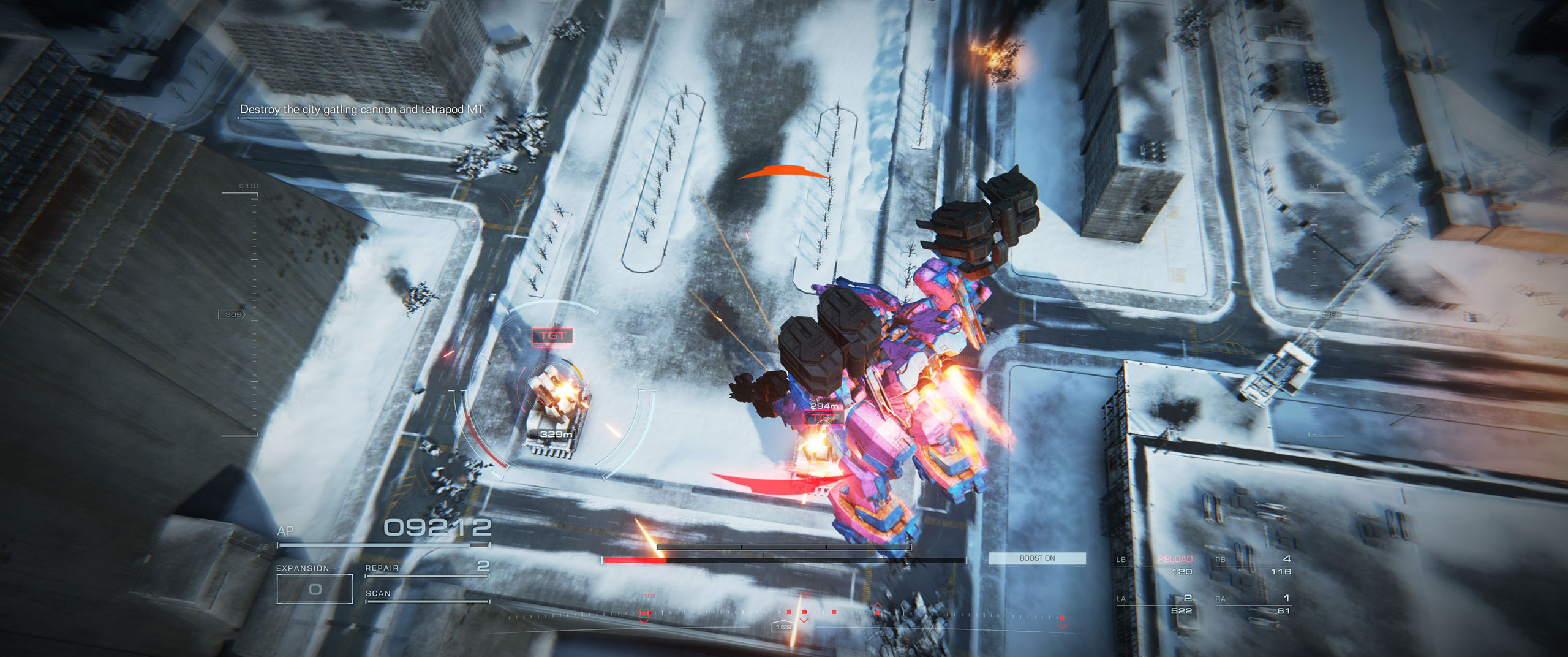
Now before you go and say, “git gud,” I’m well aware that every boss fight in a FromSoftware game is a skill check. This is especially true in Armored Core VI, considering someone has managed to finish the entire game without actually equipping any weapon. They punched and kicked their way through bosses that took me hours to beat, so clearly there’s a very high skill ceiling. My personal gripe with Armored Core VI is that there are specific loadouts that can trivialize each boss battle. This means you could have a very frustrating experience if you want to play through the entire game with the specific mech you built that complements your playstyle. This becomes more jarring when the majority of missions are very easy to blow through, which means you aren’t actively learning new strategies or getting better at the game. Then suddenly, you hit a wall in the form of a boss and aren’t equipped with the knowledge to quickly figure it out.
What adds to the frustration with Armored Core VI’s boss fights is that, unlike Elden Ring, each attempt doesn’t feel like you learned anything new. The game somehow makes you feel, inexplicably, that the fight is completely unfair, even though you know it’s not. You’ve seen that it’s possible for someone to kick and punch their way to victory, so clearly the fight isn’t unfair. Yet, it still manages to make you feel that way and it can be very frustrating. Even worse, I didn’t feel any sense of accomplishment when I did manage to defeat the boss. Instead, it just felt like I got lucky, or the boss randomly just decided to not fly at a million miles an hour, and slash me from behind repeatedly while I was frantically spinning my camera trying to figure out where it went.
As I struggled for hours with some of the bosses, I decided I had no real choice other than to change my build. Sure, I likely could have eventually learned how to defeat the boss with my specific mech, but after a couple hours of failure and not feeling like I learned anything new, it just didn’t feel fun. This led me to draw an interesting comparison with card deckbuilding. I started to think of Armored Core VI like a card game. My mech is my deck, and all the parts I have available to me are my cards. In any well-balanced card game, some decks counter other decks, which means if you want to have a higher win-rate, you’re probably going to have to swap in a few cards, even if you don’t like playing them. And that’s how I accepted Armored Core VI’s design philosophy. The game doesn’t strictly force you to play by its rules. However, it’s evident that some builds are better suited for certain scenarios, and the game encourages you to experiment. There’s nothing wrong with that, but there are different types of gamers out there in the world, and some of them, like me, would prefer that builds aren’t hard-countered. Weaker, sure, but there are some instances where it feels like you can’t do anything against the boss, even though I know that’s not true.
Welcoming New Pilots
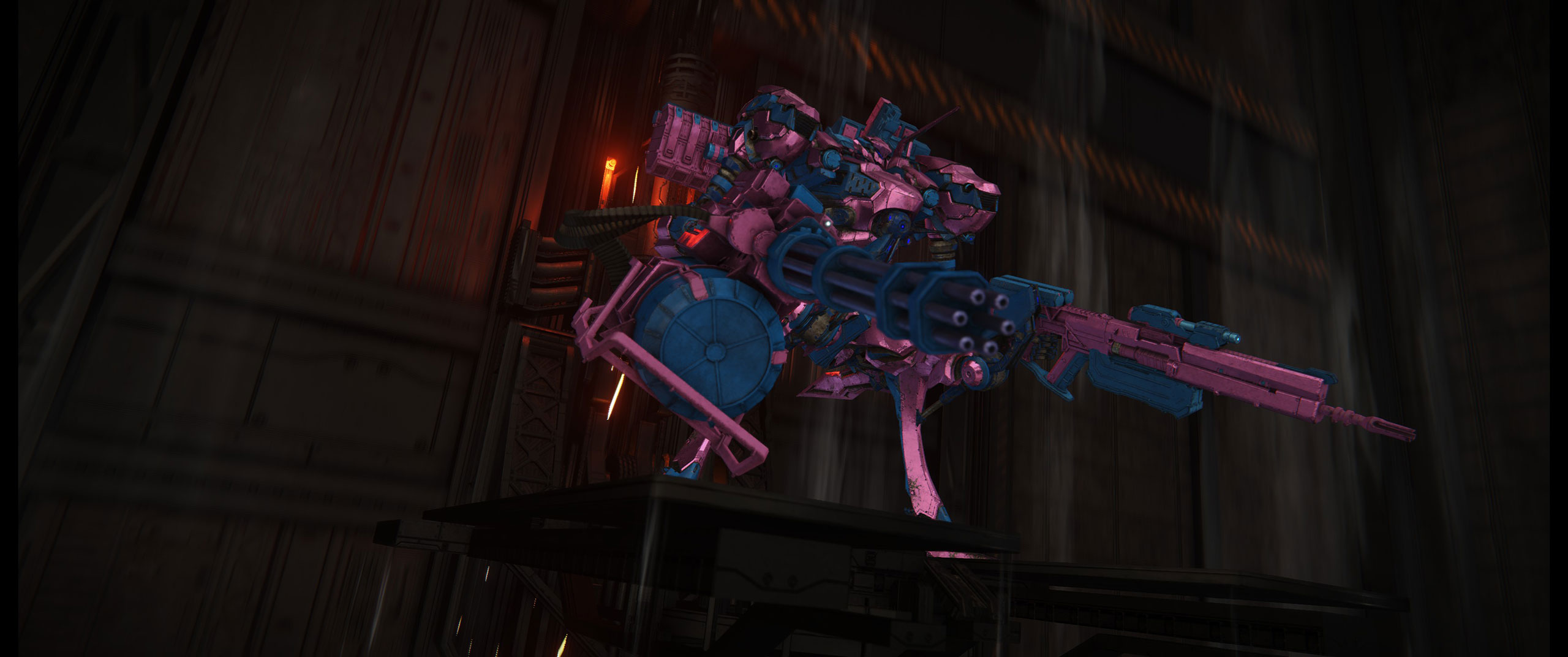
The biggest criticism I have for Armored Core VI is the noticeably absent co-op option. Co-op exists in many other FromSoftware titles and I don’t quite understand why the team chose to leave it out of this game. I can definitely imagine that it would entirely ruin the balance of certain fights, since two-on-one in Armored Core VI is very unbalanced compared to a two-on-one in, say, Elden Ring, but I feel like FromSoftware is talented enough to figure that part out. The inclusion of co-op would make Armored Core VI much more approachable for casual gamers. The percentage of players who have unlocked certain achievements on Steam suggests that many get stuck early in the game. For example, as of the time of writing, only 41.6% of players have completed chapter 1. If the option existed for players to enlist the aid of a friend or even a random stranger, I think Armored Core VI would be much more accessible.
I found that the game segments focusing on flying around and taking down multiple enemies — making up roughly 90% of the gameplay — to be more enjoyable than the 10% focused on boss fights. There were times I wanted to go back and fully explore an area to unlock more options for my mech, but decided not to because I didn’t feel like spending the time trying to kill a certain boss again. However, one thing Armored Core VI does well is allow for easy loadout changes after a failure. Exiting the mission is not necessary unless you wish to shop for new parts. Otherwise, you can build an entirely new mech with your available parts and restart from the last checkpoint. Also, each time you restart after dying, you replenish all your ammunition and repair kits, which helps balance the game’s difficulty.
From Rookie to Raven
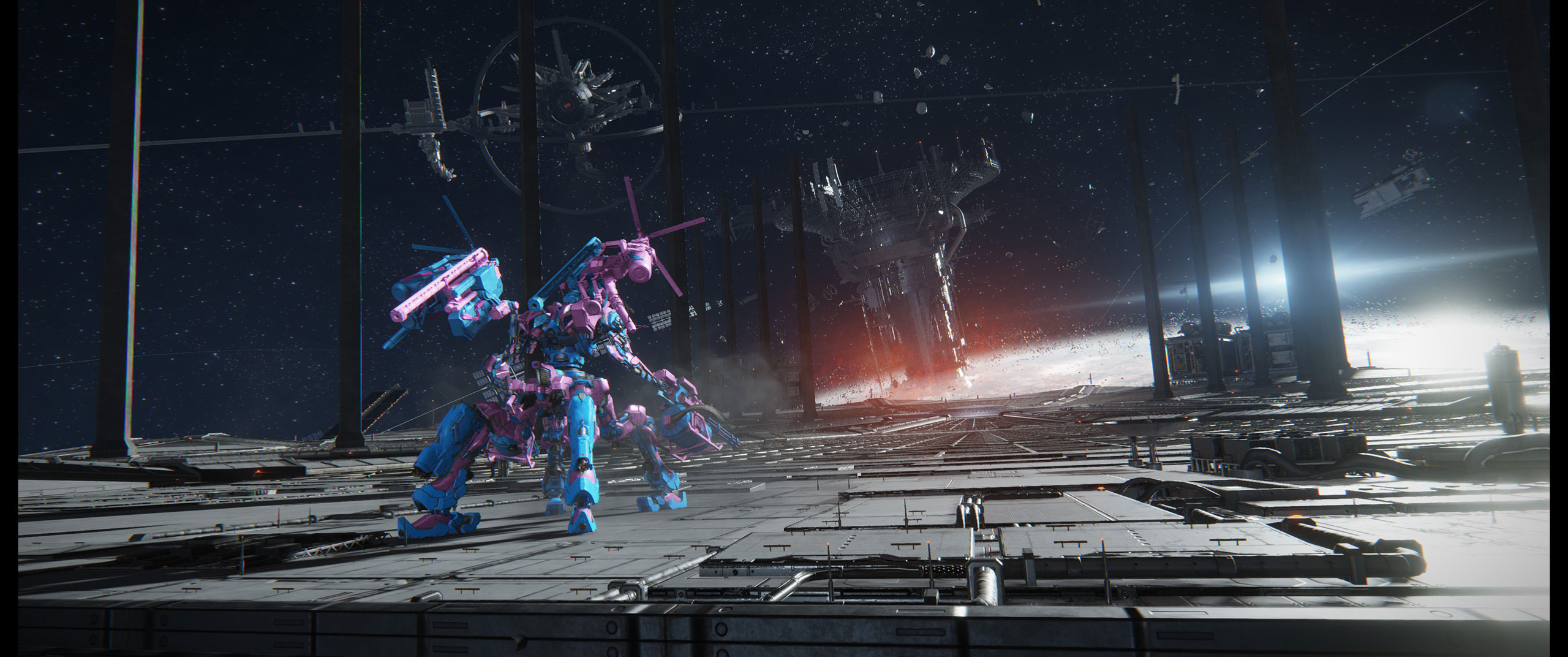
Given that I had fewer than 100 hours of experience with FromSoftware games before Armored Core VI, and had never played a previous Armored Core title, the fact that I was able to complete this game is telling. Despite all my frustrations, especially during boss fights, I couldn’t wait to get back into the game the very next day. The overall gameplay and combat in the game is unlike any other I’ve experienced, with a high level of freedom when it comes to movement. Once I got over the hurdle of constantly changing my mech to deal with the challenges I was facing, I found the game much more enjoyable. It’s also one of the best-looking games I’ve ever played. Some of the environments and visuals are just so crisp that I ended up taking over 50 screenshots throughout my playthrough.
Ultimately, I believe that some of the boss fights can feel completely unfair. Again, I know that’s not the case, but it’s how the game makes you feel at times and I think that’s really important to note. A game’s difficulty is not very easy to balance, but I do believe FromSoftware is some of the best in the business when it comes to doing it well. Unfortunately though, I understand how Armored Core VI can be more frustrating than fun for certain players.
If you’re looking for a unique gaming experience, Armored Core VI stands in a class of its own. From its complex customization system to its fluid and well varied combat system, I am very glad that I got to experience this game and even managed to complete a playthrough. However, I can’t say I’m very eager to jump into another FromSoftware title anytime soon. I’m still not quite convinced the developer’s games are for me, but maybe this was a small step in the right direction.
Armored Core VI: Fires of Rubicon was released on August 25, 2023 on PlayStation 4, PlayStation 5, Xbox One, Xbox Series X|S, and PC. This review is based on a purchased retail copy of the game on PC. While FullCleared does have affiliate partnerships, they do not influence our editorial content. We may, however, earn commissions for products purchased via affiliate links.


